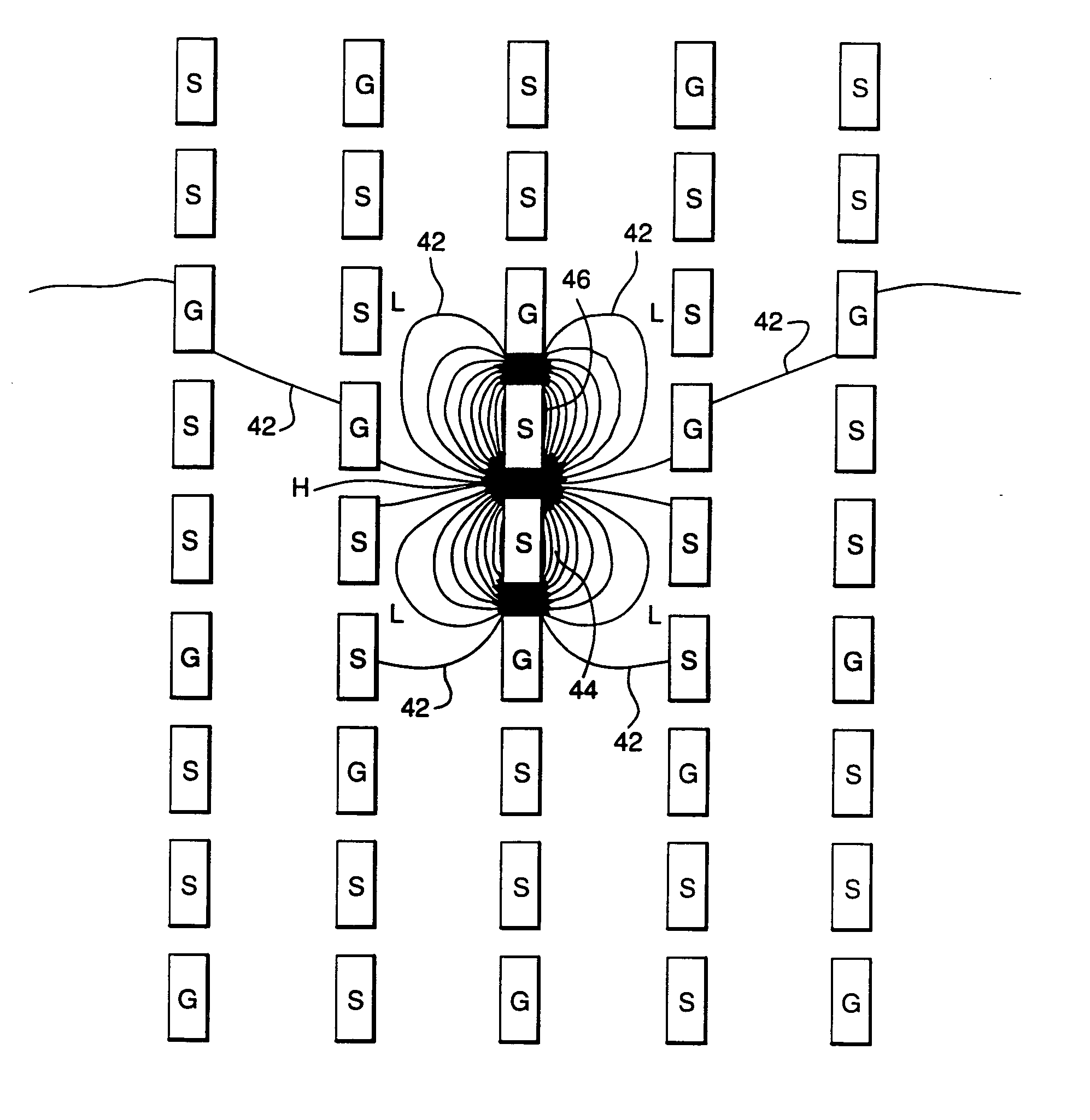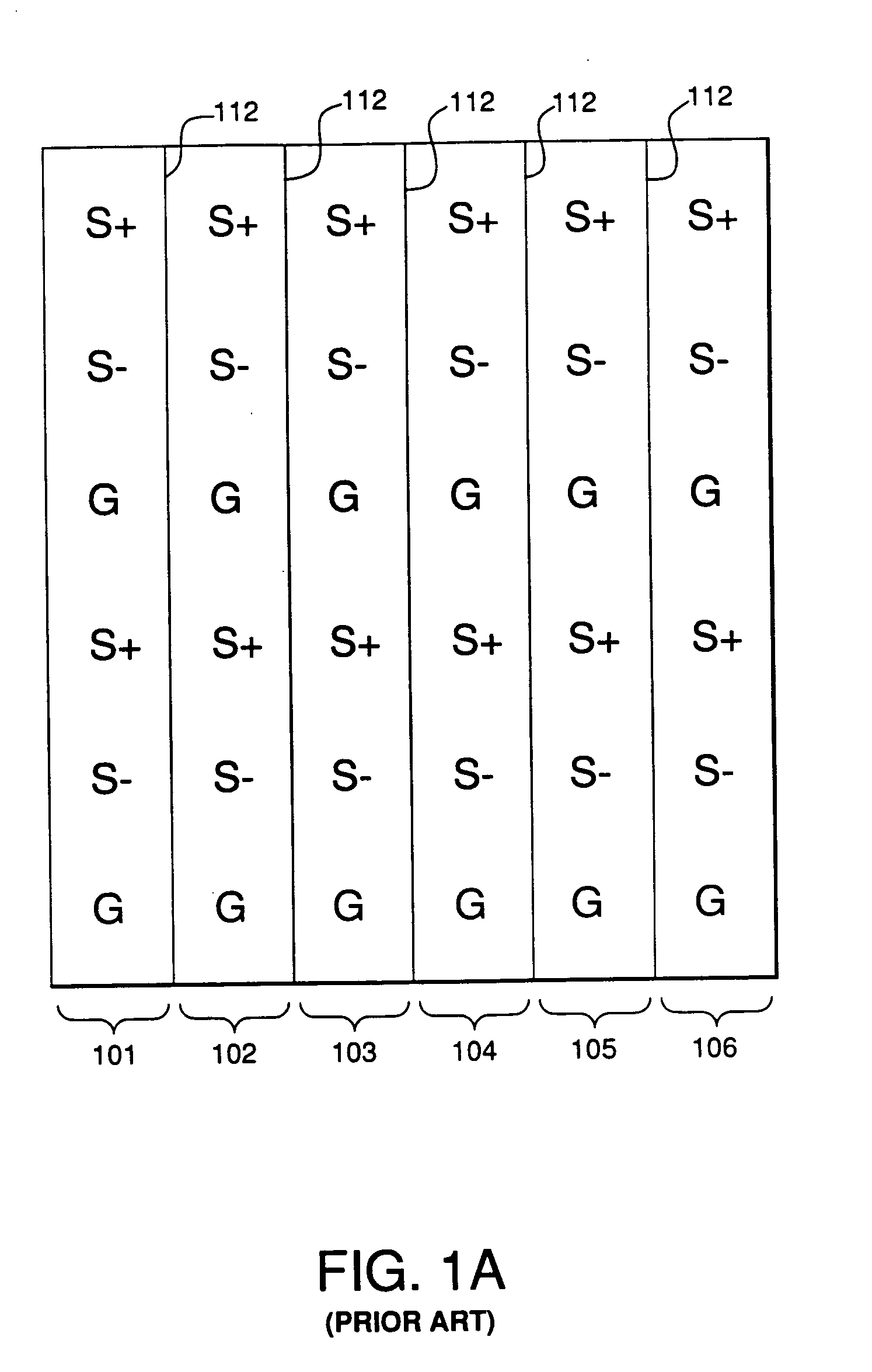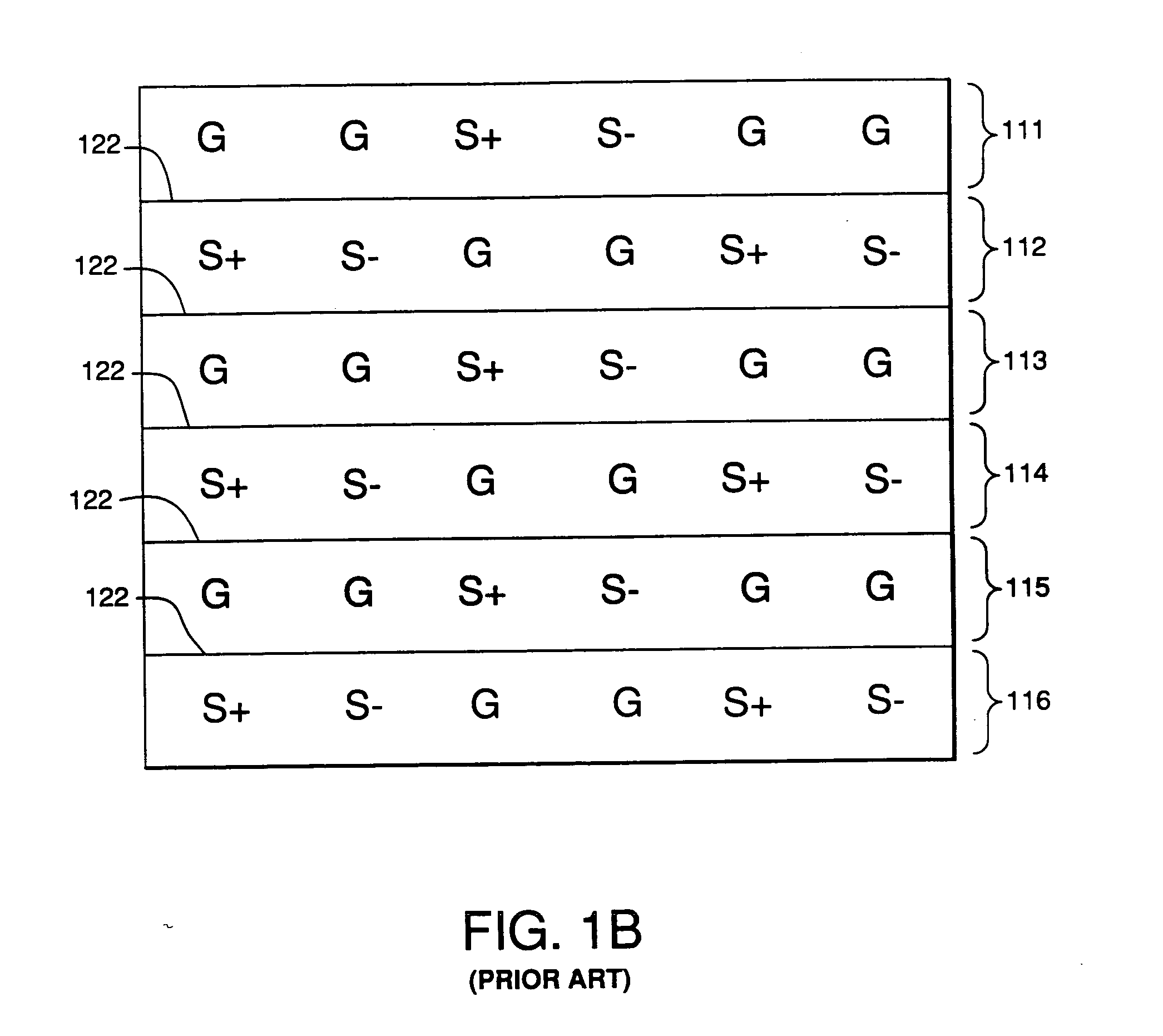Electrical connectors having differential signal pairs configured to reduce cross-talk on adjacent pairs
- Summary
- Abstract
- Description
- Claims
- Application Information
AI Technical Summary
Problems solved by technology
Method used
Image
Examples
Embodiment Construction
[0067] Certain terminology may be used in the following description for convenience only and should not be considered as limiting the invention in any way. For example, the terms “top,”“bottom,”“left,”“right,”“upper,” and “lower” designate directions in the figures to which reference is made. Likewise, the terms “inwardly” and “outwardly” designate directions toward and away from, respectively, the geometric center of the referenced object. The terminology includes the words above specifically mentioned, derivatives thereof, and words of similar import.
I-Shaped Geometry for Electrical Connectors—Theoretical Model
[0068]FIG. 2A is a schematic illustration of an electrical connector in which conductive and dielectric elements are arranged in a generally “I” shaped geometry. Such connectors are embodied in the assignee's “I-BEAM” technology, and are described and claimed in U.S. Pat. No. 5,741,144, entitled “Low Cross And Impedance Controlled Electric Connector,” the disclosure of wh...
PUM
 Login to View More
Login to View More Abstract
Description
Claims
Application Information
 Login to View More
Login to View More - R&D
- Intellectual Property
- Life Sciences
- Materials
- Tech Scout
- Unparalleled Data Quality
- Higher Quality Content
- 60% Fewer Hallucinations
Browse by: Latest US Patents, China's latest patents, Technical Efficacy Thesaurus, Application Domain, Technology Topic, Popular Technical Reports.
© 2025 PatSnap. All rights reserved.Legal|Privacy policy|Modern Slavery Act Transparency Statement|Sitemap|About US| Contact US: help@patsnap.com



